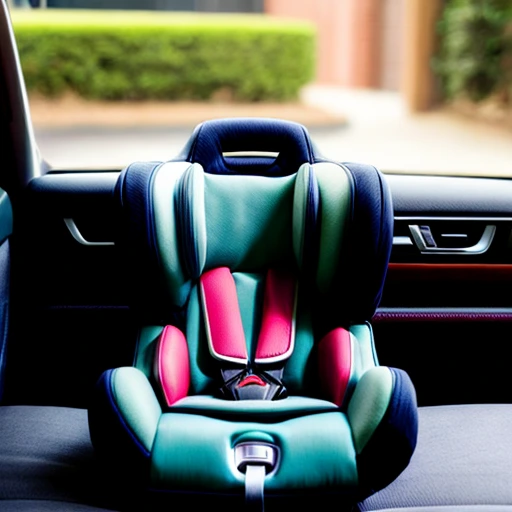Child car safety is of utmost importance for parents and caregivers. Choosing the right car seat for your child’s age and size is a crucial step in ensuring their safety while travelling in a vehicle. With so many different types of car seats available in the market, it can be overwhelming for parents to decide which one to choose.

Understanding car seat stages is the first step in choosing the right car seat for your child. There are three main stages of car seats: rear-facing, forward-facing, and booster seats. The type of car seat your child needs will depend on their age, weight, and height. Safety standards and legal requirements also play a significant role in choosing the right car seat. It is essential to ensure that the car seat you choose meets the required safety standards and legal requirements in your country.
Key Takeaways
- Understanding the different car seat stages is crucial in choosing the right car seat for your child.
- Safety standards and legal requirements should be considered when selecting a car seat.
- Proper installation and usage of the car seat, as well as factors such as your child’s age, weight, and height, should also be taken into account.
Understanding Car Seat Stages

When it comes to child car safety, choosing the right car seat for your child’s age and size is crucial. Child car seats are divided into stages based on the child’s age and weight. Understanding these stages will help you choose the right car seat for your child.
Infant Car Seats
Infant car seats are designed for babies from birth to around 12 months old. They are rear-facing and have a weight limit of up to 13 kg. These car seats provide the best protection for newborns and young infants, as they offer support for the baby’s head, neck, and spine.
Convertible Car Seats
Convertible car seats are designed to grow with your child. They can be used from birth to around 4 years old and can be rear-facing or forward-facing. They have a higher weight limit than infant car seats, usually up to 18 kg. Convertible car seats can be a cost-effective option as they can be used for a longer period.
Booster Seats
Booster seats are designed for children who have outgrown their convertible car seat. They are forward-facing and are used with a seat belt. Booster seats raise the child’s seating position, so the seat belt fits correctly across their chest and hips. Booster seats are suitable for children from around 4 years old and have a weight limit of up to 36 kg.
Choosing the right car seat for your child is important for their safety. Always make sure the car seat you choose is appropriate for your child’s age, weight, and height. It is also important to follow the manufacturer’s instructions for installation and use.
Safety Standards and Legal Requirements

When it comes to choosing the right car seat for your child, it’s important to follow the safety standards and legal requirements set by the UK and EU. These regulations ensure that your child is protected in the event of an accident and that the car seat you choose is appropriate for their age and size.
UK Safety Regulations
In the UK, the law requires that all children must use a car seat until they are 12 years old or 135cm tall, whichever comes first. After that, they must use a seat belt. It is the responsibility of the driver to ensure that any child under the age of 14 is wearing a seat belt or is in an appropriate car seat.
There are different types of car seats available for different age groups, including rear-facing infant carriers, forward-facing toddler seats, and booster seats. It’s important to choose a seat that is appropriate for your child’s weight and height, and that fits your car properly. You can find more information on the specific regulations and types of car seats on the GOV.UK website.
EU Safety Certification
In addition to UK regulations, car seats sold in the UK must also comply with EU safety standards. There are currently two EU safety certifications for car seats: ECE R44/04 and ECE R129 (i-Size). These certifications ensure that car seats meet minimum safety requirements and have been tested for impact performance, ease of use, and other safety features.
ECE R44/04 is an older certification that classifies car seats based on weight. ECE R129, on the other hand, classifies car seats based on height and requires rear-facing travel for children up to 15 months old. It’s important to note that not all car seats are approved for use in all countries, so be sure to check that the seat you choose is approved for use in the UK.
Choosing the right car seat for your child is an important decision. By following the safety standards and legal requirements set by the UK and EU, you can ensure that your child is protected while travelling in a car.
Installation and Usage Tips

Correct Installation
When installing a car seat, it is important to follow the manufacturer’s instructions carefully. Make sure the seat is securely fastened to the car using either the seat belt or the ISOFIX system. Double-check that the seat is level and that there is no more than an inch of movement in any direction.
Harnessing Your Child Properly
Once the car seat is installed, it is important to make sure your child is properly harnessed. The harness should be snug but not too tight. You should be able to fit two fingers between your child’s chest and the harness. Make sure the harness is at or below your child’s shoulders for rear-facing seats and at or above your child’s shoulders for forward-facing seats.
Positioning the Car Seat
The position of the car seat is also important for your child’s safety. Rear-facing seats should always be placed in the back seat of the car, and never in front of an active airbag. If you have more than one child, it is recommended that the youngest child is placed in the middle seat of the car. This will help protect them in the event of a side impact.
Remember, the safest car seat is one that fits your child’s age, weight, and height, and is installed and used correctly every time.
Factors to Consider When Choosing a Car Seat
Child’s Age and Size
When selecting a car seat, it is crucial to consider the child’s age and size. Different car seats are designed for specific age groups and weight ranges. For instance, rear-facing seats are suitable for infants and young toddlers, while forward-facing seats accommodate older children. It is essential to adhere to the manufacturer’s guidelines and ensure that the car seat aligns with the child’s current age and size to guarantee optimal safety.
Car Seat Features and Accessories
When evaluating car seats, parents should consider the features and accessories that enhance safety and convenience. This may include adjustable harness systems, side-impact protection, and additional padding for comfort. Furthermore, accessories such as cup holders and removable covers can make daily use and maintenance more manageable.
Vehicle Compatibility
Another critical aspect to consider is the compatibility of the car seat with the vehicle. Parents should ensure that the chosen car seat fits securely in their vehicle and is compatible with the seat belt or LATCH system. Checking the vehicle’s manual and consulting with a certified car seat technician can provide valuable insights into the best car seat options for a specific vehicle model.
By carefully considering these factors, parents can make informed decisions when choosing a car seat that prioritises their child’s safety and comfort.
Frequently Asked Questions
What are the recommended age and size guidelines for each category of child car seats?
The recommended age and size guidelines for each category of child car seats are as follows:
- Rear-facing car seats: Suitable for infants up to 15 months old or weighing up to 13kg.
- Forward-facing car seats: Suitable for children weighing between 9kg and 18kg.
- Booster seats: Suitable for children weighing between 15kg and 36kg.
At what stage should a child transition from a rear-facing to a forward-facing car seat?
It is recommended that a child should remain in a rear-facing car seat for as long as possible, up to the age of 15 months or until they have outgrown the weight limit of the car seat. Once they have outgrown the rear-facing car seat, they can transition to a forward-facing car seat.
Is there a specific weight limit for children to use high-back booster seats?
Yes, there is a specific weight limit for children to use high-back booster seats. Children weighing between 15kg and 36kg should use high-back booster seats.
Until what age is it necessary for a child to ride in a booster seat?
A child must ride in a booster seat until they are 12 years old or 135cm tall, whichever comes first. After this, they can use a regular seat belt.
How do I determine the correct car seat size for my child?
The correct car seat size for your child depends on their weight and height. Each car seat will have specific weight and height limits, so it is important to check the manufacturer’s guidelines before purchasing a car seat.
What is the maximum duration a newborn should spend in a car seat at one time?
The maximum duration a newborn should spend in a car seat at one time is 2 hours. It is important to take breaks and allow your newborn to stretch and move around every 2 hours to avoid any discomfort or health issues.




